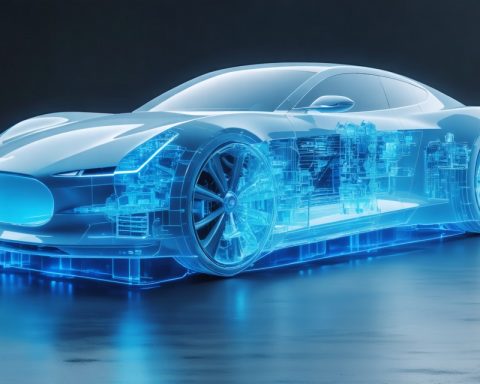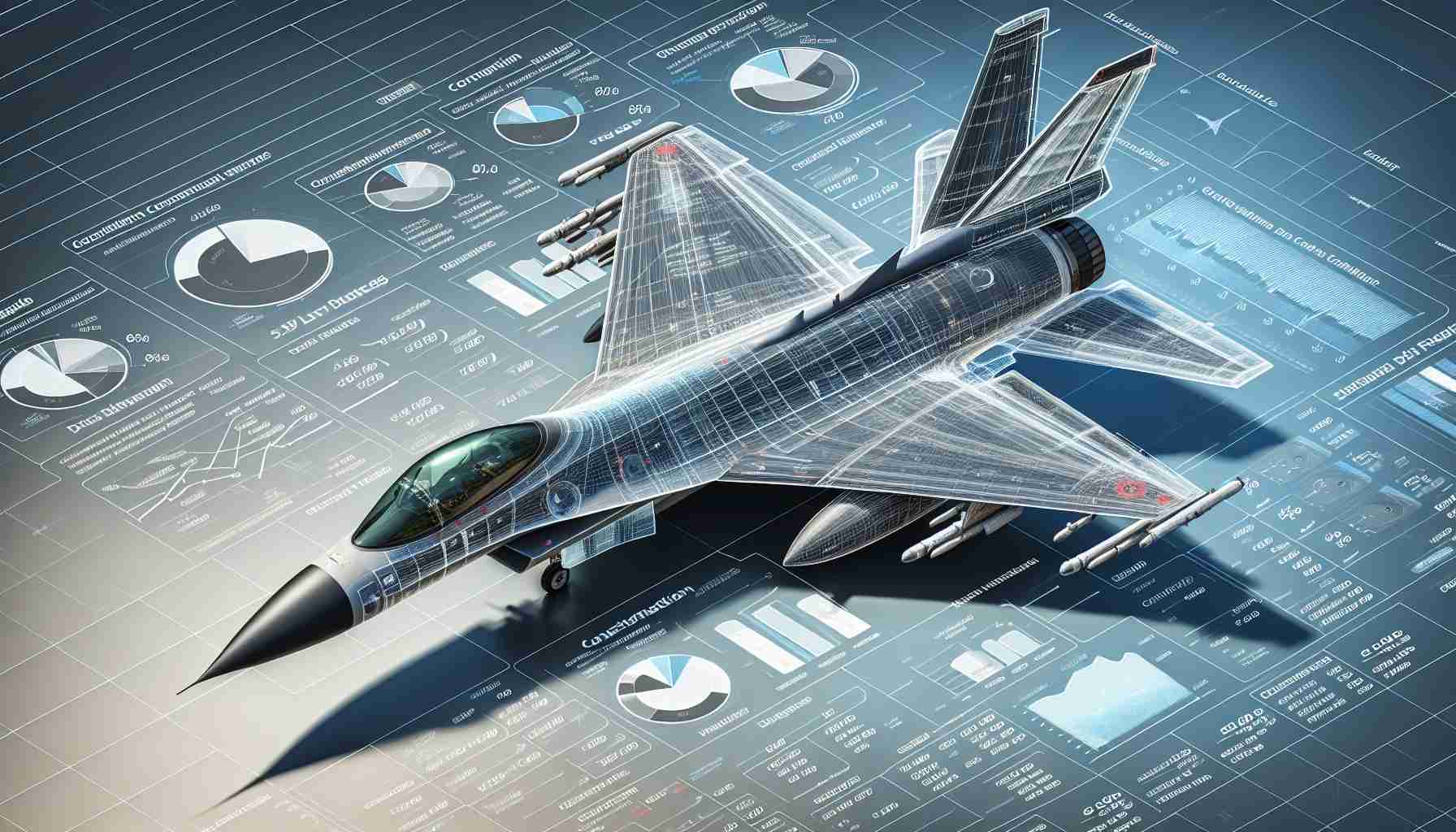- China’s EV battery market is witnessing a fierce competition between giants BYD and CATL, shaping the future of mobility.
- BYD achieved significant growth in February, increasing market share to 23.62% with 8.20 GWh of battery installations and strong sales of 322,846 NEVs.
- CATL, despite a slight decrease in market share, maintains a leading 44.45% with 15.43 GWh of battery installations.
- BYD leads in lithium iron phosphate (LFP) batteries with a 28.82% market share, while CATL holds 38.41% for LFP installations.
- China’s power battery sector grew 94.1% year-on-year to 34.9 GWh, though monthly fluctuations highlight market volatility.
- Emerging competitors like Gotion High-tech and Eve Energy show market diversification with shares of 5.22% and 4.97%, respectively.
- The evolving battery landscape is crucial to China’s decarbonization goals and demands continuous innovation.
Amidst China’s rapidly evolving automotive landscape, the race for supremacy in the electric vehicle (EV) battery market is a spectacle of titanic proportions. In the heart of this electrifying competition, BYD and CATL, industry behemoths, are locked in a high-stakes duel, trading blows in a battle for market share that promises to redefine the future of mobility.
Surging Ahead: BYD’s Meteoric Rise
In February, BYD, identified on the stock market as HKG: 1211 and OTCMKTS: BYDDY, orchestrated a remarkable rebound. The company’s share of China’s electric vehicle battery market swelled as its sales soared, reflecting a strategic alignment of production capabilities and market demand. This monumental growth was underpinned by an impressive sales figure of 322,846 new energy vehicles (NEVs), an astounding 163.95 percent hike compared to the previous year. The company’s battery installations, comprising a substantial 8.20 gigawatt-hours (GWh) of power, secured it 23.62 percent of the market share. This rise of 0.72 percentage points from January encapsulates a success story driven by determination and innovation.
BYD’s prowess extends into the lithium iron phosphate (LFP) battery landscape, where it commands a robust 28.82 percent of the market share. The robust performance of LFP batteries, known for their lower cost, safety, and promising lifecycle, is evident in their contribution to China’s overall power battery production, which reached a staggering 100.3 GWh in February.
CATL: A Giant with Steady Footing
Meanwhile, CATL (SHE: 300750), despite experiencing a slight dip, remains a formidable force. With 15.43 GWh of power batteries installed, it retains a commanding 44.45 percent share of the market, only slightly down from January’s 47.08 percent share. CATL continues to lead the field in LFP battery installations with a 38.41 percent market share, demonstrating resilience in an increasingly competitive field.
This modest decline in market share does little to undermine CATL’s formidable position. With a global EV battery market share reaching an impressive 38.9 percent as of early 2025, CATL’s leadership in China’s strategically critical battery sector remains unchallenged.
The Broader Landscape
Beyond the titans’ duel, the overall performance of China’s power battery sector in February paints a picture of robust growth. The country’s power battery installations soared to 34.9 GWh, marking an impressive year-on-year growth of 94.1 percent. However, with this expansive growth comes volatility, reflected in a 10.1 percent drop from the previous month.
Below the commanding heights of CATL and BYD, competitors like Gotion High-tech and Eve Energy are staking their claims in this electrified landscape. Gotion tallied an installed base of 5.22 percent, while Eve Energy rounded out the top ranks with 4.97 percent, showcasing a dynamic and diversifying market.
The Takeaway
The febrile race between CATL and BYD for dominance of the EV battery market is emblematic of a broader industrial transformation. As China accelerates its decarbonization plans, leveraging its prowess in battery technology, the implications are global. Companies must innovate relentlessly to survive in this hyper-competitive ecosystem. For both consumers and industry watchers, the message is clear: we are witnessing the battery era’s dawn, where the quest for efficiency, sustainability, and market leadership converges into a singular, electrifying vision of the future.
Inside China’s EV Battery Battle: The Rise of BYD vs. CATL
Introduction to the EV Battery Landscape
The race for dominance in China’s electric vehicle (EV) battery market is rapidly intensifying. This contest is not merely about gaining market share; it’s about shaping the future of mobility and establishing leadership in a sector critical to global decarbonization efforts. At the forefront are two industry giants: BYD and CATL, each vying for supremacy with distinct strategies.
BYD’s Meteoric Rise
A Surge in Market Share
BYD has made significant strides, marked by its February sales surging to 322,846 new energy vehicles (NEVs), a year-on-year increase of nearly 164%. This growth is not just a sales success but represents a strategic recalibration that aligns production capabilities with burgeoning market demand.
Dominance in LFP Batteries
BYD’s strength is evident in the lithium iron phosphate (LFP) battery sector, where it commands nearly 29% of the market. LFP batteries are noted for their cost-effectiveness, safety, and long lifecycle—qualities that are crucial in mass-market electric vehicles.
CATL’s Steady Leadership
Maintained Market Leader
Despite a minor dip, CATL remains a dominant player with a 44.45% share of the EV battery market. This slight decline does not overshadow its global market presence, which stands at an impressive 38.9% as of early 2025.
Stronghold in LFP Batteries
CATL continues to lead in LFP battery installations with a market share of over 38%, indicating resilience and strategic foresight in retaining its competitive edge.
Market Dynamics and Predictions
Broader Industry Trends
February witnessed a robust expansion of China’s power battery installations, reaching 34.9 GWh and reflecting a 94.1% year-on-year growth. However, this growth comes with volatility, as seen in a 10.1% decline from January, indicating market fluctuations typical of an industry in rapid transformation.
Emerging Players
Besides BYD and CATL, companies like Gotion High-tech and Eve Energy are also making their presence felt, signaling a diversifying competitive landscape. Gotion holds a 5.22% market share, while Eve Energy possesses 4.97%.
Key Takeaways for Potential Investors
1. Investment Opportunities: As the market continues to grow, investing in established companies like CATL and BYD might offer robust returns given their market dominance and continual innovation.
2. Diversification in Battery Technology: Keeping an eye on emerging battery technologies beyond LFP, such as solid-state batteries, could provide insights into future industry shifts.
Closing Thoughts
The intense competition between BYD and CATL is emblematic of a broader shift towards sustainable mobility solutions. For investors and consumers alike, the focus should remain on innovation, sustainability, and the strategic maneuvers of these two giants as they race to define the future of the EV battery market.
Related Links
– Explore more about the ongoing developments in the tech industry at TechRadar.
– Get insights into the automotive sector from Autocar.
Quick Tips for Consumers
– Research Battery Types: Ensure you understand the different battery types (e.g., LFP vs. NMC) to make informed decisions about the type of EV that suits your needs.
– Stay Updated on Trends: Follow trusted automotive and tech sources to stay informed about the latest developments in EV technologies and market dynamics.













